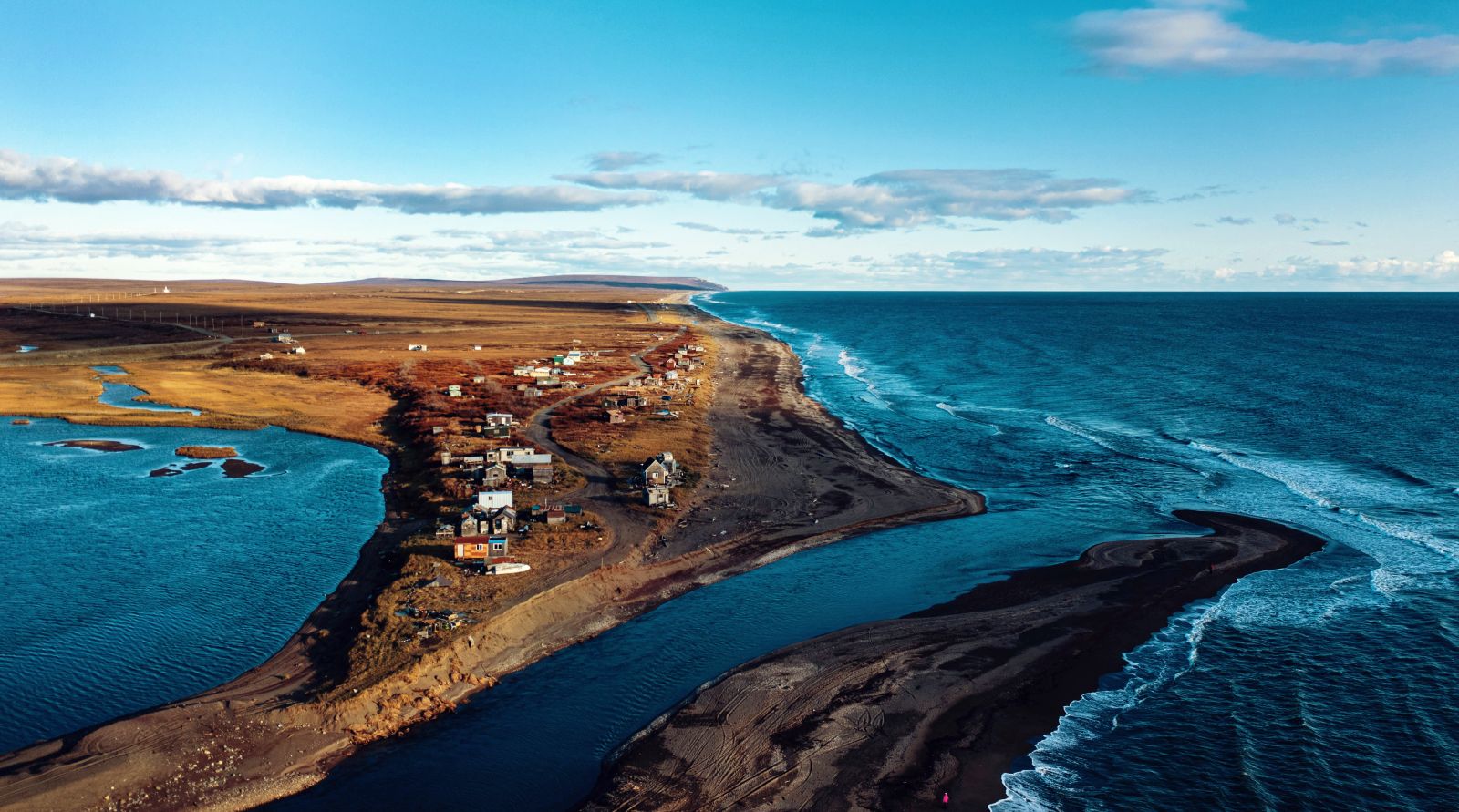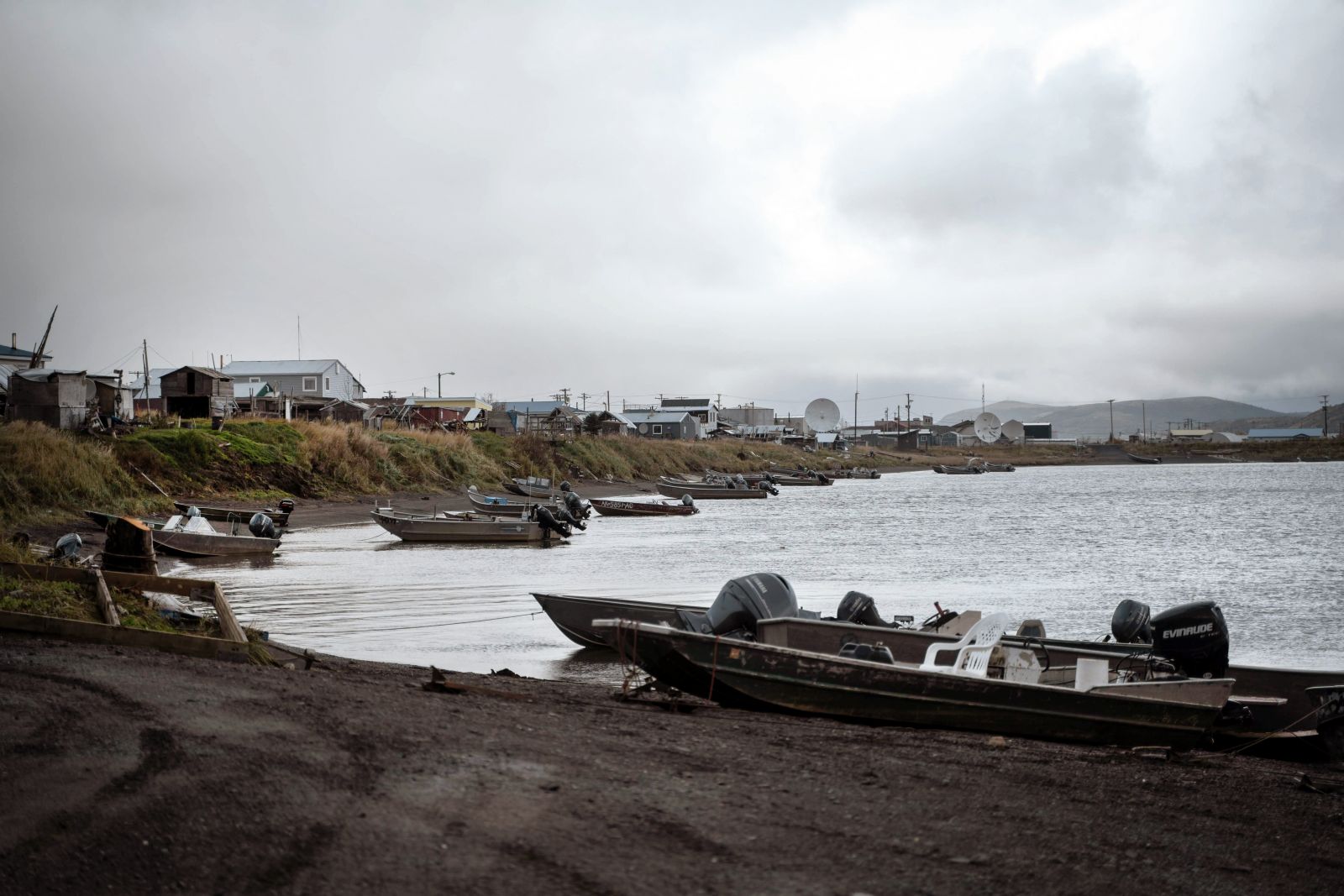
FEATURE ARTICLE
By Agnieszka Gautier
Thousands of short-tailed shearwaters, Australian migratory birds, washed up dead on the beaches off of Bristol Bay, Alaska, in late June 2019. By mid-August, the bird die-off stretched north to the Bering and Chukchi Seas. Seabird die-offs have occurred occasionally in Alaska, but since 2015, large die-off events have been witnessed each year. Necropsies reveal empty bellies and low body weights.
“They likely starved,” said Matt Druckenmiller, a research scientist who works on the Exchange for Local Observation and Knowledge of the Arctic (ELOKA) project at the National Snow and Ice Data Center. “They didn’t have access to food because the sea ice did not extend south far enough.” Algae that grows under sea ice kick starts the Arctic food web, seeding phytoplankton blooms that feed the zooplankton that feeds small fish and other animals further up the food chain. With no sea ice, the food chain is disrupted in the spring and early summer, when birds like the short-tailed shearwaters need it most.
Indigenous Elders shared similar observations of bird die-offs and other environmental concerns at a meeting in September 2019 in Nome, Alaska. As an editor of the National Ocean and Atmospheric Administration (NOAA) Arctic Report Card, which presents annual, peer-reviewed information on environmental changes in the Arctic, Druckenmiller with his fellow peers recognized a lack of Indigenous observations in the report, prompting the Nome meeting. “Many of the Elders who contributed to the workshop never had the opportunity before to share their observations across so many communities and for it to go into a report like this,” Druckenmiller said. This year’s NOAA Arctic Report Card is being released at the American Geophysical Union (AGU) conference in San Francisco on December 10, 2019.
The round table

Since 2007, the NOAA Arctic Report Card has mainly focused on the physical sciences and ecology. “We knew we needed to include Indigenous voices in the report this year, especially given the recent dramatic changes in the Bering Sea,” Druckenmiller said. The NOAA team was equally supportive. Key partners in the region advised Druckenmiller to work with an established organization like the Bering Sea Elders Group (BSEG), which is a tribally mandated organization of thirty-nine communities, each of which are individually federally recognized tribes.
In June, BSEG approved to contribute their knowledge to the report card, helping to recruit ten elders from eight of their communities to attend the meeting. Each community, however, has its own story to tell. “There are dozens more that were not being represented, and observations vary by region or community,” Druckenmiller said. Unfortunately, western culture tends to generalize the Indigenous perspective. “Tribal members are sensitive to this. They are very quick to point out that they share knowledge on behalf of their parents and grandparent, teachers, mentors, and their community as a whole, and they are always careful to recognize that as an individual they may be an imperfect conveyer for a large body of knowledge,” Druckenmiller said. “It’s their humility. At the same time, they recognize that all members of the community may interpret things a bit differently.”
The Elder discussions, nevertheless, kept circling back to a fundamental observation: the loss of sea ice. The ice season is starting later and ending earlier. Winter months in the Bering Sea have been nearly ice-free for the last two years, affecting many aspects of their daily lives. Elders then discussed changing snow patterns, including less snow to fill their creek beds to travel safely by snowmachine across the land. They discussed more frequent rain events in winter that cover their runways with ice. And much like a family sitting around a dinner table, the conversation kept coming back to the consequences of these changes—food security.
At the meeting, Druckenmiller did not facilitate. He listened. “This was an opportunity for tribal Elders to just talk amongst themselves. I wasn’t listening to their conversations as a scientist,” Druckenmiller said. “I was listening to what they shared through the lens of what it means to be a human being. They want to make sure their children have a safe future and the same food to eat.”
We are what we eat

Each community has its own subsistence calendar, and things are shifting. One member reported having to travel farther for his ugruk (bearded seal) and caribou in Unalakleet, Alaska, a town of about 750 residents within Norton Sound in the Bering Sea. “Understanding the miles that these communities need to travel when they don’t have the snowfall to cross rivers or ice in the oceans to bring in seals, it’s incredible.” The cost of fuel in rural, western Alaska is up to three times that of the contiguous United States. Electricity is up to five times more expensive. A gallon of milk can run $12. Druckenmiller said, “If you include the high cost of living in rural Alaska, it becomes pretty apparent that food security is a very sensitive issue here.”
As Druckenmiller listened to these stories and observations, he was impressed and extremely thankful by the level of participation. Everyone shared. At times, topics strayed from climate change to the focus on food contamination from past radioactive leakages, including from Fukushima after the 2011 earthquake and tsunami that hit Japan. Traces of radioactive material have been found in recent years in the Bering Sea. What this means for the fish or humans that eat them is still not clear and may take years to understand.
Other observations included marine mammals washing up on shores, either starved or infected and inedible, and storm surges eroding community shorelines, runways, homes, and even fish camps along the river mouths. Some Elders reported surprising occurrences like saltwater leeches remaining on salmon long after the fish enter freshwater. Each Elder witnessed different effects depending on his or her region, but there were common themes: reduced sea ice, warming air temperatures, warming waters, and reduced snow cover. And above all else, food security.
We are scientists
Unlike the Elders, scientists tend not think in generational time frames. “I think these stories help scientists think more holistically to understand how things connect,” Druckenmiller said. “Indigenous Knowledge is not always properly recognized for its true depth and comprehensiveness across the ocean and land.” Druckenmiller was sharply reminded that these Elders are also true naturalists, skilled observers, and powerful storytellers.
One participant from Teller, Alaska, said, “We are scientists.” His community has had to reevaluate and refine best practices in response to environmental changes. For example, they recently refined an approach for how to butcher walruses in the water. When there was abundant sea ice, walruses were routinely harvested on sea ice floes before being brought back to the community. Unreliable sea ice in recent years has forced the community to come up with new harvest methods. Since loading whole walrus carcasses onto an 18-foot aluminum boat is dangerous in rough waters, community members learned how to butcher them in water. “This wasn’t necessarily knowledge passed down from their Elders, but something they had to figure out on their own through trial and error,” Druckenmiller said. “Now they have a method to bring food home.”
American Geophysical Union and beyond

The resulting Bering Sea Elder’s report that is part of the NOAA Arctic Report Card 2019, highlights many of these thematic observations, but Druckenmiller is still sensitive to the fact that these are just the voices of ten individuals and that there are more voices to be heard. A larger report, complete with Elder interviews, can be found on the ELOKA website for the participants to share with their communities and use how they see fit.
At the 2019 American Geophysical Union (AGU) conference, the director of the Bering Sea Elders Group and a few other Elders will join the AGU town hall and be present during the NOAA Arctic Report Card press release. This will be the first time for these Elders to attend AGU, hoping to highlight how much knowledge resides in their land and address the tangible impacts that climate change is already having on Alaska and the rest of the Arctic. As one of the Elders from the group said, “It’s a whole different world that we’re going to have to learn to deal with.”

